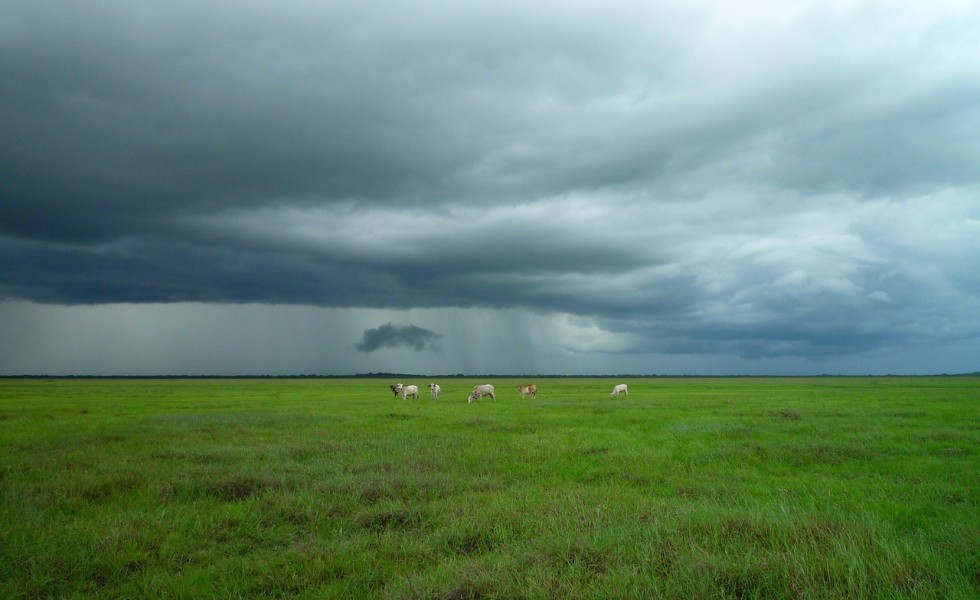Threading Needles with Camels
Posted on August 27, 2021

Twenty-five years ago, when almost every American farm and ranch organization was denying the existence of climate change, William E. Rees and a colleague developed a method to measure how much “nature” was required to support a people or an economy. They called that measurement an “ecological footprint.”
That science–ecological economics, Rees’s career specialty at the University of British Columbia–was quickly used by others to develop what became a “carbon footprint,” a breakthrough for all to better understand our impact on the planet.
Now Rees is back with another striking analysis. In late July, he and Megan K. Seibert, the executive director of The REAL Green Deal Project, published a paper, titled “Through the Eye of a Needle,” that shows “the fatal problems with so-called renewable energy technologies…”
It’s an eye-opening reality check for governments, businesses, and farmers to see climate change for what it soon might be, an earth-shattering event, not some profit-making opportunity for clever people to monetize carbon, wind, solar, and biofuels.
That is all but certain, say the authors, because none of the math for any of today’s so-called solutions works.
For example, most post-carbon hopes are built on replacing fossil fuels with renewable sources of “clean” electricity, a tall order because only “19% of global energy consumption is in the form of electricity. The other 81% is in the form of liquid fuel,” carbon.
In the U.S. alone, that means we would need an electrical “grid construction rate 14 times that of the rate over the past half century.” Moreover, we’d have to “quadruple… annual construction of wind turbines every year for the next 15 years and triple… annual construction of solar PV (photovoltaics) every year for the next 15 years,” too.
And, if we pull those miracles off, we’d need to “repeat the process indefinitely since solar panels and wind turbines have an average lifespan of 15 to 30 years.”
Neither improbability, however, accounts for one ounce of the energy required “to make solar panels, high-tech wind turbines, batteries, and all other industrial products” we’d need to transition from fossil fuels to electricity.
And even if we clear that hurdle, “An entire year of production from the world’s largest lithium ion battery manufacturing facility–Tesla’s $5 billion Gigafactory in Nevada–could store only three minutes’ worth of annual U.S. electricity demand.”
Seibert and Rees do similar math for other energy alternatives–such as nuclear, biofuels, and hydrogen–and none of it works because climate change isn’t the problem. Ecological overshoot is: too much fossil fuel use, too much carbon, too many people, and too much unsustainable growth.
The answer to this overshoot “is both stunningly simple and wretchedly complex: the world must abandon neoliberal capitalism’s material growth and face head-on that material life after fossil fuels will closely resemble life before fossil fuels.”
That doesn’t mean oil lamps and walking to town. It does mean, however, conservation and smarter use because, for instance, “62% of energy flow through the modern economy is wasted” today.
But, add the authors, the future, like the past, will be powered by more “human muscle and draft animals.”
Sure, laugh the fencerow-to-fencerow agbiz advocates, and how will you feed 8 billion-plus people?
Here’s where the “wretchedly complex” part comes in. We won’t have to because “Failure to implement a planned, relatively painless population reduction strategy,” predict the authors, “would guarantee a traumatic population crash imposed by Nature in a climate-ravaged, fossil-energy-devoid world.”
“This is,” after all, “a finite planet with limited productive capacity.”
That also means “a renewed focus on community building and regional self-reliance; re-localization of essential production and other economic activities” with an “emphasis on economic resilience over mere efficiency.”
None of this should sound new or even radical to the average-aged, 58 year-old American farmer. To a large extent, it’s how they grew up just two generations ago.
Which happens to be about the same amount of time for the world to change before Nature regains control.
And it will because, in fact, it already is.
© 2021 agcomm
The Farm and Food File is published weekly throughout the U.S. and Canada. Past columns, supporting documents, and contact information are posted at farmandfoodfile.com.
Share This